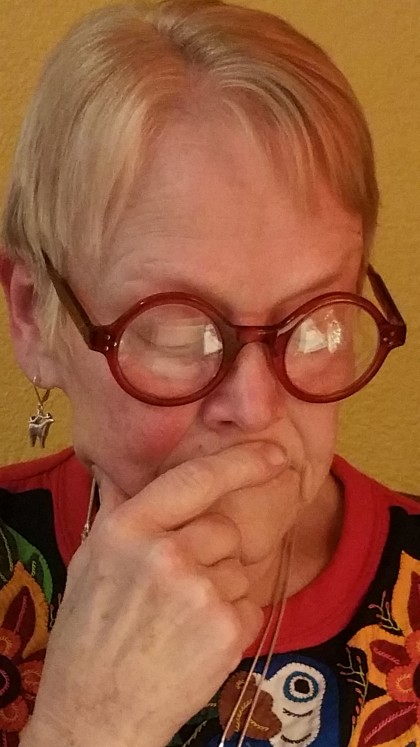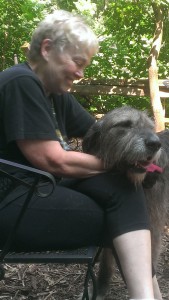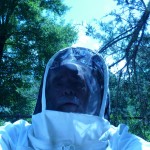Spring New (Passover) Moon
 Writing can lay bare something hidden, perhaps something that needed excavation or something attached to a thread, even a flimsy thread, by which it can be pulled from the inner world. Things get lost in there, pushed behind stacks of unused memories or stored with a faulty label. Sometimes ideas once full and vibrant get partially severed from their context, crucial links of thought go missing and the idea fades away.
Writing can lay bare something hidden, perhaps something that needed excavation or something attached to a thread, even a flimsy thread, by which it can be pulled from the inner world. Things get lost in there, pushed behind stacks of unused memories or stored with a faulty label. Sometimes ideas once full and vibrant get partially severed from their context, crucial links of thought go missing and the idea fades away.
“I’ve continued to write and study, my primary passions.” March 21, 2017 This sentence is an example, a recent example. It stares back at me, rather baldly. Oh. Well, that’s right, isn’t it?
I love to read, follow an idea through its growth and changes, learn about something in depth, wonder about it, tease out of it new implications or old truths.
I love to write. I don’t know why. Might be an inheritance from my newspaperman father. Might just be long established habit. Whatever the reason writing is my painting, my sculpture, my photography. I have to do it to feel whole.
 Which, speaking of ideas, then links to the idea of the third phase. That quote comes from recent thoughts on the third phase. A primary wondering for me, I think for all third phasers, is this: what am I about in this last phase of my life?
Which, speaking of ideas, then links to the idea of the third phase. That quote comes from recent thoughts on the third phase. A primary wondering for me, I think for all third phasers, is this: what am I about in this last phase of my life?
The Trump catastrophe, a miserable wound of our country’s own making, pulled on the 60’s radical thread always near the surface for me. I’ve been trying to put that mask back on, to become the political activist I once was. I felt obligated. You know, if you’re not part of the solution, you’re part of the problem.
But it hasn’t been happening. I just haven’t connected with other activists. I haven’t been doing much more than writing about it. (a clue here, by the way) Grousing and complaining, yes, sure. But not acting.
Writing and study. Third phase. Beth Evergreen. With Kate I’ve found a community that cherishes study, scholarship, a community that finds writing an understandable vocation. Right now I’m thinking, wondering. Should I lean into my primary passions? Stay with them. Dig deeper. That feels right.
Here’s a confession, too. I’ve never liked politics. The person I become, the masks I put on then, feel far away from my core Self. Why then have I spent so much of my life in one political arena after another?
 Part duty. For whatever reason I came out of Alexandria with fully formed political ideas about justice, equality, fairness. They were strong, rooted in the powerful union movement among my friend’s parents who worked for General Motors, reinforced by the liberal politics of my Roosevelt Democrat parents and then pushed toward action in the turmoil of the 60’s.
Part duty. For whatever reason I came out of Alexandria with fully formed political ideas about justice, equality, fairness. They were strong, rooted in the powerful union movement among my friend’s parents who worked for General Motors, reinforced by the liberal politics of my Roosevelt Democrat parents and then pushed toward action in the turmoil of the 60’s.
Part ego. It feels good to lead, to have people hang on my ideas, to see change occur when something I’ve helped shape makes things happen. But this is part of what feels far away from my core, introverted Self. That ego drive also presses forward an angry, demanding, often insensitive persona. A persona I dislike.
Part religious conviction. The almost random way in which I ended up in seminary, then the ministry came from following political conviction away from graduate academics and toward an institution willing to pay me to organize, to act politically. There was a merger of political passion and the prophetic line of a certain strain of liberal Christianity, even radical Christianity.
No conclusions here. Not yet. Just more of the shifts and changes, movements in my soul. Something will come out of all this. Not sure what. Not right now.

 The third phase, that phase after the career and nuclear family focused portion of our life has come to an end or is winding down, has its own delights and horrors. Auto-didacts, those with pleasurable, but challenging hobbies, those with adequate funds, those with a close network of friends and family have a good chance of enjoying the third phase more than any other part of their life. It’s a time when the pressures of achievement and child-rearing recede. They may not disappear, but their initially critical significance shifts to the margins.
The third phase, that phase after the career and nuclear family focused portion of our life has come to an end or is winding down, has its own delights and horrors. Auto-didacts, those with pleasurable, but challenging hobbies, those with adequate funds, those with a close network of friends and family have a good chance of enjoying the third phase more than any other part of their life. It’s a time when the pressures of achievement and child-rearing recede. They may not disappear, but their initially critical significance shifts to the margins. With prostate cancer two years ago and a total knee replacement last year my body has given notice that its sell-by date is approaching. Yes, both of those have resolved well, at least so far, but they are concrete proof that I will not live forever. Something, sometime. Now it seems to be Kate’s turn to face her mortality. She has a cluster of medical issues that are challenging, making her low energy and too thin.
With prostate cancer two years ago and a total knee replacement last year my body has given notice that its sell-by date is approaching. Yes, both of those have resolved well, at least so far, but they are concrete proof that I will not live forever. Something, sometime. Now it seems to be Kate’s turn to face her mortality. She has a cluster of medical issues that are challenging, making her low energy and too thin. The horrors are the loss of the one you love, the person whose life has become so entwined with your own, not enmeshed, I don’t mean here a situation where life going on without the other is inconceivable, but the loss of a person whose life has been a comfortable and comforting fit with your own, a bond of mutual affection. Imagining life without Kate leaves me with a hollow feeling.
The horrors are the loss of the one you love, the person whose life has become so entwined with your own, not enmeshed, I don’t mean here a situation where life going on without the other is inconceivable, but the loss of a person whose life has been a comfortable and comforting fit with your own, a bond of mutual affection. Imagining life without Kate leaves me with a hollow feeling. At 12:30 we drove over to Evergreen for mussar at Beth Evergreen. It was Rabbi Jamie’s birthday and each woman brought a cooked or purchased offering of some kind. We had cranberry juice with tea and mint, apple juice, brie and a wonderful soft cheese, warm carrots, pistachios, cashews, strawberries, grapes, melon, crackers, chips, guacamole, a birthday cake, sea-salt caramel and chocolate brownies (Kate, see pic), with Halloween plates and napkins.
At 12:30 we drove over to Evergreen for mussar at Beth Evergreen. It was Rabbi Jamie’s birthday and each woman brought a cooked or purchased offering of some kind. We had cranberry juice with tea and mint, apple juice, brie and a wonderful soft cheese, warm carrots, pistachios, cashews, strawberries, grapes, melon, crackers, chips, guacamole, a birthday cake, sea-salt caramel and chocolate brownies (Kate, see pic), with Halloween plates and napkins.
